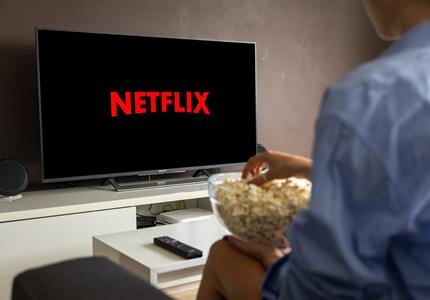

2019 Q3 Newsletter
"We are the angry mob
We read the papers everyday
We like who we like, we hate who we hate
But we're also easily swayed"
'The Angry Mob'. Kaiser Chiefs, 2007
Groundhog Day, at least as I recall it, was a great movie. It was released in 1993 and starred Bill Murray as a TV weatherman who gets stuck in a time loop, condemned continually to re-live the same day. I often get the same feeling, particularly when writing our reviews!
Headlines over the last quarter have been dominated by Brexit, Trump, trade wars, recession warnings and the Extinction Rebellion. I certainly wouldn’t wish to downplay any of these subjects; all of them have very serious ramifications and are clearly dividing nations and, in some cases, families. However, looking back, I discovered the following opening line from my commentary at the end of the summer in 2017:
‘It’s been another long, hot one…in the political arena, the Donald continues to play a dangerous game of power-posturing with Kim Jong-un, both claiming a "declaration of war". UK and European political headlines continue to be dominated by Brexit.’
Two years on and nothing has changed. I honestly don’t think I can add anything more to the narrative that hasn’t already been endlessly dissected in newspapers, on television or the internet-Twitter-Reddit-sphere. Instead, I would like to spend some time looking at what has actually been happening to your investments over that period and, as a consequence, to consider how we are positioned today.
Since the end of September 2017, i.e. two years ago, the MSCI World Equity Index has risen by 23% (in GBP). There have been a couple of setbacks along the way, but nothing particularly substantial in the grand scheme of things. Take August’s correction as an example. Given all the background noise, volatile politics, inverted yield curves and recessionary fears, you would be forgiven for thinking we were in the midst of a market meltdown. What actually happened was that the market fell by 4% and has all but recovered since. There were, however, some interesting changes underlying the headline figures.
What we saw was a distinct rotation: growth stocks fell and more cyclical stocks rallied as investors moved money into beaten-up, out-of-favour, sectors such as mining, energy and banking. As regular readers will know, these are areas of the market to which we have little exposure since we focus on long-term, irrefutable investment themes like healthcare in an ageing global demography, technology and – more recently – environmental solutions. We are also very clear that our portfolios will likely lag the broader market during this type of rotation; and so it was this time. Whilst we are neither surprised nor concerned at these effects, we are aware that we cannot know how long such a rotation will last. As with any structural trend, there is no way to predict the answer. Nevertheless, whilst we won’t change our long-term investment philosophy, we do want to ensure that your money remains protected in any economic environment.
As mentioned, we do not have a large exposure to mining, energy and banks; however, this type of rotation is often accompanied by a weaker dollar. In such an environment, emerging markets usually flourish – and we have good exposure to those across our strategies (and also indirectly via our core exposure to multi-national blue chip businesses). We will be closely scrutinising this portion of our portfolios to ensure that it delivers what we would expect and remain poised for any further market corrections, which at some point will likely be greater than August’s 4%. Our multi-asset portfolios remain cautiously positioned (including, for example, short-duration bonds), which will provide some downside protection whilst also providing the funding for us to pick up high-quality assets at cheaper prices should the opportunity arise.
Overall our portfolios have performed strongly over the year and all four of our core strategies have provided double-digit returns year-to-date. We remain confident in the relevance of our long-term themes and, as highlighted above, vigilant for any change in the market leadership, particularly as we enter one of the most traditionally volatile times of year.
Cautious Portfolios:
Lower Risk
by Alex Chambers
Objective: The Cautious Portfolio’s objective is to increase its value by predominantly allocating capital to fixed-income investments. The portfolio can also invest into global blue-chip equities with strong cash-flows and progressive dividend policies. A neutral position would be a 75% bond/25% equity split and the maximum equity-weighting of approximately 35%. The income generated can be re-invested to provide capital growth or taken as an income stream.
The cautious strategy returned 2.2% over the quarter including both capital and income returns.
Looking at a couple of the market trends over the period, equity markets had a strong July but a flatter August and September. There was a bit of a rotation from growth stocks to value stocks in August, a reversal to the trend we’ve seen for quite some time now. Having said this, we were pleased with how the equity exposure in the portfolio behaved. By virtue of the fact that we own dividend-paying stocks, our equities sit somewhere in the middle of value and growth, allowing our underlying funds to hold-up reasonably well. Brexit has also driven a fair amount of volatility in longer-dated government bonds. Accordingly, we have sold our exposure in favour of what we consider to be more cautious alternatives.
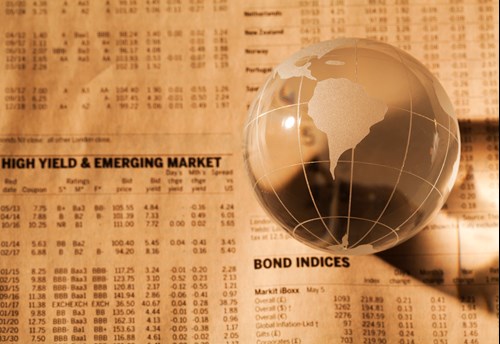
We made three changes to the strategy. The first change we made was to sell the entire position in Oaktree Global High Yield Bond Fund before reinvesting the proceeds into the Royal London Short Duration Global High Yield Bond Fund, a new fund for the portfolio. We consider that it offers an attractive yield whilst being significantly less exposed to a market where longer-dated high yield looks expensive.
The second change was to reduce the equity weighting in the portfolio by 2.5% to 22.5%. We saw an opportunity to make this reduction through the Fidelity Global Dividend Fund, which, on an absolute basis, was trading expensively in relation to its own history and was the most expensive equity fund in the portfolio. The proceeds from the sale were reinvested into our core investment-grade corporate bond positions: Pimco Global Investment Grade Credit Fund and Twenty Four Corporate Bond Fund.
Over the quarter, elevated Brexit uncertainty caused these bonds to rally sharply leaving long-dated bonds looking extremely expensive, skewing the risk/reward balance. We have nevertheless maintained our exposure to shorter-dated government bonds in order to limit volatility in the overall portfolio. The proceeds from this sale were split between the Rathbone Ethical Bond Fund and Smith & Williamson Short Dated Corporate Bond Fund.
These changes all form part of our progressive de-risking of the portfolio. We have trimmed or sold positions where we consider the market expensive. Such an approach helps to manage the overall risk in the portfolio: as assets become expensive the portfolio naturally and incrementally becomes more cautious – or vice versa. Even better, it happens without the need for us to have an economic crystal ball or any insight into what the next Trump tweet will say!
Balanced Portfolios:
Medium Risk
By Tiffany Gervaise-Brazier
Objective: The Balanced Portfolio’s objective is to provide capital appreciation through a balance of fixed income and global equities. A neutral position is a 50% bond/50% equity split and the maximum equity weighting is 60%. The cash generated can be re-invested to provide capital or taken as an income stream.
The US economic expansion is into its 11th year, making it the longest expansion since 1900. Ten years of monetary stimulus, economic growth and falling unemployment have continued to boost bond and stock prices so far this year. And although growth has remained relatively solid, concerns about a slowdown and the negative impact from the on-going trade tensions between the U.S. and China are troubling investors. They are now torn between buying bonds (and the inverted yield curve), jumping aboard the equity bandwagon or – arguably the most difficult decision of all – doing nothing and harbouring cash.
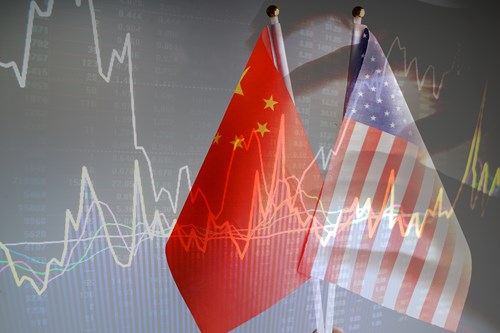
If we strip our philosophy right back, we offer investors long-term capital appreciation via a combination of global equity and fixed income investments. Moreover, the strategy is no stranger to political and economic uncertainty, having been created in 2008!
The equity weighting is divided into two camps: defensive, global large and mega-cap stocks; and, theme-orientated equities such as Brown Advisory and the Polar Capital exposure to healthcare and technology. During a slowdown or recession, good companies continue to pay their dividends, continue to sell their products and, perhaps most importantly, continue to improve their global reach. These are the companies that we want to buy at sensible valuations and hold throughout.
The purpose of the bond allocation within the strategy is to reduce the volatility of the portfolio whilst generating a yield. Given current prices, we are focusing on liquidity (i.e. the ability to sell assets should we wish to). Owning diversified and short-dated bond funds with excellent liquidity allows us to be proactive when allocating to assets. When added to a slightly elevated cash allocation (~7%), this enables us to move quickly should equity valuations retrace and attractive entry points for our preferred assets appear. In short, we agree with Warren Buffett's dictum that: ‘cash combined with courage in a time of crisis is priceless.’ Now we are not saying that we have arrived at that crisis, but alarm bells start to ring as you exceed all-time market highs.
The strategy has returned over 1% for the quarter. Year-to-date performance has predominately been attributed to the global equity element, which has posted 23% (in GBP) for the year. Ever mindful of valuations, we trimmed the Fundsmith Global Equity Fund in July back to a 7.5% position.
The defensive nature of the bond proportion has performed well, driven mainly by the Twenty Four Global Corporate Bond Fund and the 5-10 year gilt rallying on the back of uncertainty around Brexit (and the direction of interest rate movements) causing some investors to exit risk assets and embark on a flight to safety.
Staying with the bond proportion of the portfolio, in August we sold Oaktree’s Global High Yield Bond Fund and purchased a short-dated high yield bond fund run by Royal London. The latter has a much more conservative approach and market prices gave us the opportunity to switch while keeping the same level of income. This was a good way of keeping our return potential while further reducing risk.
While September seems to have brought calmer markets at the headline level, beneath the surface this has not been the case. This month, we have seen a small rally in energy (+4%), financials (~+4%) and utilities (~+2%) sectors, while our preferred sectors of technology, healthcare, the emerging consumer and consumer staples, (where we are more heavily invested than the broader market indices) have posted negative or flat performance for the month.
More recently, our exposure to Latin America has come under pressure for a number of reasons. This will be addressed by Sam Dovey, below. Volatility may provide us with an attractive entry point, but we are always mindful of the need to balance investment risk against investment objectives when investing into this space. We currently have an exposure of 4% to the Brown Advisory Latin American Fund and remain comfortable with the risk/reward profile of the fund and its allocation within the thematic equity allocation of the strategy. More importantly, we are still excited about the long-term prospects of the fund and the region.
The strategy returned -0.67% in September, taking year-to-date performance to 11.5%. Negative months are always hard to stomach, but we continue to proceed with caution by holding our lowest equity weighting (48.5%) whilst ensuring that the portfolio remains diversified and invested in quality assets that stand the test of time. Meanwhile we keep a laser focus on liquidity.
As uncertainty looks set to persist, a reminder of our investment process is timely and apposite. We dedicate a huge amount of time to monitoring the portfolio’s underlying holdings in order to know exactly what we own; we combine the number-crunching with a rolling review of the strategic and thematic rationale for why we want to continue to own those assets. This helps us to understand (and, crucially, explain) any sudden changes or movements, especially where there are anomalous reactions. As a consequence, the monitoring and review process allows us to communicate quickly and transparently to clients as to market behaviour and the progress of their investment.
Growth Portfolios:
Higher Risk
By Samantha Dovey
Objective: The Growth Portfolio’s objective is to provide long-term capital appreciation by investing predominantly into global equities. A neutral position is a 25% bond/75% equity split and the maximum equity weighting is approximately 85%.
I think if we asked you, our investors, whether our Q3 performance was positive or negative, my gut instinct is that the majority would respond ‘negative’. This is probably because, emotionally, we think about what has been last reported in the news. And, let’s face it, that has not been a barrel of laughs of late, given all the negativity that seems to have spread across the globe and into our homes. But in terms of actual numbers, we are pleased to report a positive quarter of 1.2%, bringing the year-to-date return to 14.2%, when world equities have posted 21.5% and global bonds 9.7%.
Those of you who focus on global news and our factsheets in order to get a ‘Brexit break’ may have noticed that Argentina had an exceptionally difficult month in August when the current president, Mauricio Macri, unexpectedly lost by a huge 16% in the preliminary election polls to opposition leader Alberto Fernandez (the actual election takes place on 27th October 2019, so we will be keeping an eye out). This surprise result caused both the Argentine equity market and currency markets to go into free fall: for the month, equities ended down nearly 28% in GBP terms and currency 30%. Not pleasant for investors!
Our exposure to this region is via Brown Advisory Latin America. The fund managers are fundamental, bottom-up stock pickers, who are benchmark agnostic; this means that they do not invest relative to the Latin American benchmark, so are not constrained in any way shape or form in terms of the companies they can or cannot buy. The benchmark (and thus the majority of Brown’s Latin American peers) had a 2% exposure to Argentina, whereas Brown had 13% allocated to the region and was therefore hit hard. The fund ended the month -12.5% – by far and away our worst performing fund – and contributed -0.6% of performance, when the growth strategy posted -2.15% for the month. For the quarter, the fund was down 6.9% in GBP terms, followed by Polar Healthcare at -2.8%. Conversely, Arisaig Global Emerging Market Consumer Fund posted +4.7% and Lazard Global Equity Franchise +4.4%.
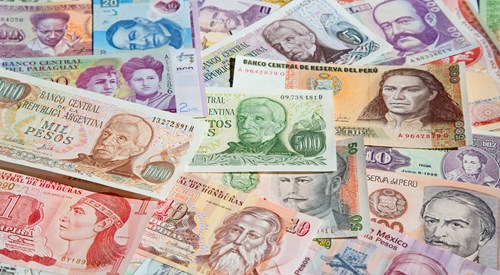
The fund managers of Brown Advisory Latin America, Rupert Brandt and Peter Cawston, are seasoned investors in this region and were somewhat surprised at the poll results. On the back of this news they sold down all their exposure, bar one Argentine stock, in the portfolio. This surprised us to some extent since they are ‘buy-and-hold’ investors: we would ordinarily expect them to add on weakness, not sell in the belly of the pain. We spoke to them the day after the fall and they were nothing but open, honest and transparent. Their rationale was that, while it was not a decision they took lightly, the potential change in leadership in Argentina was a structural negative change (Fernandez is not as pro-market as Macri) and they therefore thought it prudent to exit. The only stock they kept was Bolsa y Mercados, the stock exchange of Argentina. The thought behind this is that if this grows anything like the Brazilian exchange, then they would be in for a substantial upside – since the stock is exceptionally cheap in terms of what you are paying in regards to earnings.
As it happens, my colleague, Shannon Lancaster, and I met the fund managers on 30th September as part of our annual review/due diligence process and we are pleased to report we had a very good meeting with them. They are bullish on Brazil as an investment opportunity (they deployed the Argentine proceeds into Brazil, so the exposure now stands at just over 62%) due to the fact that pension reforms in the region has been extremely popular and moved quicker than expected, which should bode equally well for the economic outlook of the country.
Lots of people have queried our direct exposure to Latin America, due to uncertainties such as Argentina and the amount of volatility the region can exhibit. But it is very easy to forget that Latin America has 100 million more people than the USA, and that, by 2030, Latin America is expected to have a population of 706m versus the USA of 349m. This equates to population growth of 65% for Latin America over the next 10+ years and 6% for the USA. If Latin America moves up the income scale, even marginally, then the consumer spending will increase drastically; this is the thematic trend we are harnessing with Brown Advisory.
What we must also remember is that each fund has a specific role within your portfolio. Yes, the fund caused some pain over Q3 2019, but we should not forget that when markets were falling in Q4 2018, and the MSCI World Technology Index fell 15.7%, Brown posted +8.5% and was, in fact, our only positive fund over this period. This quarter, MSCI World Technology posted +5.6% and Brown -6.9%.
In fact, we would not anyway wish all the funds to move in the same (correlated) direction at the same time, since they would then all go up or down together! Uncorrelated oscillations thereby help to smooth the return profile of the portfolio.
Global Blue Chip Portfolios:
Higher Risk
by Holly Warburton
Objective: The Global Blue Chip Portfolio invests into approximately 25-30 global blue chips that are in line with our long term investment themes. The aim is to invest into such companies at an attractive valuation and hold them for the long-term. The cash generated can be reinvested to provide capital growth or taken as an income stream.
As per the start of the majority of our annual Q3 newsletters, it’s been another long, hot summer of heightened political and economic stress with concomitant volatility. For 2019 the topics have been China and US trade talks being on, off and on again; Mr Johnson attempting to resolve Brexit; and, Hongkongers fighting for their voices to be heard.
In these testing times it was the defensive positions, such as consumer staples, that held up better than the rest of the market, which overall averaged close to 4% over the quarter. The Global Blue Chip’s exposure and bias towards this area of the market held the portfolio in good stead and performance was in line with that of the market. The only sectors to outperformance staples were utilities and real estate, which were boosted as bond yields came under pressure. In short, yield-seeking investors were compelled to switch into these higher yielding sectors. Our portfolio does not have exposure to either sector due to the potential for, in the first case, government intervention and, in the second, illiquidity.

One of our preferred sectors that didn’t fare so well during the period was healthcare, albeit there was disparity at a stock level; Medtronic was our overall best performer and Johnson & Johnson a laggard.
Ben focuses more on the latest Medtronic innovation, Hugo, a robot-assisted surgery system, in our Stock in Focus. Aside from this venture into a growing opportunity, the global leader in the devices market has seen consistent revenue growth of around 6% over the last few years, which is finally being reflected in the share price.
The key trade over the period was also healthcare orientated: we sold the entire position in Amgen. The US biotech was the portfolio’s best performer in August, following a long-awaited win in a critical case against Sandoz (a generic drug manufacturer owned by Novartis) for infringements on two Enbrel patents. Enbrel, a $4.8Bn-a-year treatment for rheumatoid arthritis, accounted for one fifth of Amgen’s total revenue in 2018. The favourable ruling removed a notable grey cloud over the shares, causing them to rally more than 10% on the news. We made the decision to sell Amgen on the back of this relief rally because we considered management’s capital allocation policy favoured stock buybacks and acquisitions over organic pipeline opportunities.
One area where we have seen the political background directly impacting a holding is Richemont. The Swiss luxury jeweller has built a considerable presence in Asia, particularly in Hong Kong and China, with the region accounting for almost 40% of 2019’s revenue. Escalating unrest is clearly unnerving investors and the shares have come off the best part of 20% in sterling terms since the demonstrations started to gain momentum. However, it’s not the first time that the Company has had to face unrest: the "Umbrella" movement in 2014 also created volatility from which the shares eventually recovered. Sales in luxury products can be displaced but are rarely lost – such is the allure of ‘identity’ brands and why we continue to hold them.
The strategy’s overall positioning remains relatively unchanged (and thus defensive) since allocating to alternative stock ideas with higher growth profiles remains challenging from a valuation standpoint.
ETFs in Focus:
Sleeping Giants
By Bob Tannahill
Who gets squashed if the tide of cash going into ETFs reverses?
Since the global financial crisis – now over a decade ago – a number of factors have come together to create the ideal conditions for passive investment strategies to make big gains relative to traditional stock pickers. These include:
• The general feeling that ‘bankers are bad’ and ‘charge too much’
• A broadly rising market with the largest companies often leading the ascent
In this benign environment, where the biggest stock market indices have been the key winners, low fee passive funds (often called ETFs, index or tracker funds) have been very successful and absorbed huge amounts of money. As the indices have soared with little disruption and fees have come down, investors, big and small, have flocked to this cheap and easy way to ride the wave. In fact, Morningstar reported in August in its analysis of US equity funds that passive strategies have surpassed active strategies for the first time ever – with passive managed assets in excess of $4 trillion.

We have been following this trend closely for a number of years now. While we are never going to join the passive party – since we would always rather know that the stocks in our portfolios had been researched with a fine-tooth comb – the potential impact of the rise of passive investing is enormous. The growth of these (so far) sleeping giants could have a material impact on markets if at some point in the future they focus selling-pressure on certain parts of the market – or even individual stocks. Based on our research, stock-specific pressure can be created in one of two situations:
A. Where large companies (which attract big index weights – and thus heavy investment – from passives) have investor bases that are dominated by buy-and-hold investors. In these cases, shares may trade relatively infrequently compared to their size.
B. Where smaller companies fit a trendy niche, such as robotics, and attract multiple streams of passive investment that together are disproportionately large compared to the company’s size.
In both of these cases you can create a situation where the passive strategies can end up holding positions that are difficult for them to sell, even small parts of, since doing so could materially drive down the prices of the shares they are trying to sell. It is these companies that are vulnerable to an ETF liquidity squeeze that we want to avoid.
As you would expect, we have reviewed our underlying positions and are pleased to be able to say that we do not believe that we are overly exposed to such stocks. Where the odd name has come up, we will be talking to our relevant fund managers during our regular meetings to understand how they are managing this latent risk in their portfolios.
We don’t know if or when these slumbering giants will awake and squash the odd unfortunate stock in the process. We would, however, sleep far better knowing that our bed isn’t under their feet!
Stock in Focus:
Medtronic
By Ben Byrom
ROBO WARS – Medtronic reveals Hugo, its answer to Intuitive Surgical’s da Vinci System
An exciting area of development in medical healthcare has been the increasing presence of robots in operating rooms. The growing body of evidence about the efficacy of robotic assisted surgery (RAS) and the success of Intuitive Surgical’s da Vinci system has attracted the attention of some med-tech peers including Blue Chip holding Medtronic. The med-tech giant’s unveiling of Hugo in September showed Wall Street their answer to the market leading da Vinci system. Designed for use in general, urology, gynaecology, thoracic, colorectal and bariatric surgeries, the much anticipated event involved a live demonstration of a prostatectomy performed on a cadaver.
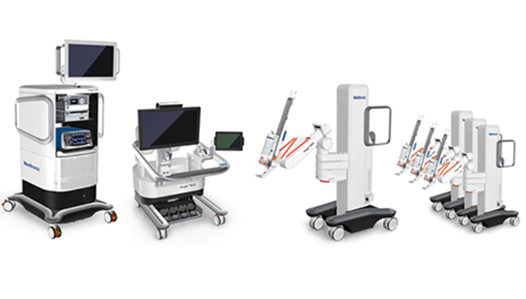 Hugo (above), Medtronic’s modular answer to incumbent system da Vinci (above right) from Intuitive Surgical.
Hugo (above), Medtronic’s modular answer to incumbent system da Vinci (above right) from Intuitive Surgical.
Source: Google Images.
Medtronic trains over 9,000 surgeons a year on its surgical instrument portfolio, and the Company claims that over 100 leading surgeons had input on their new system. Hugo’s differentiating characteristic against the incumbent rival is its modular platform consisting of a surgical tower that includes a generator, an open surgeon console to facilitate communication with the operating room staff, independent mobile carts for the robotic arms and surgical instruments.
The Company argues its modular make-up will broaden its surgical suitability as well as making component upgrades easier and more cost effective. As a result, it foresees utilisation rates to increase and the cost per RAS procedure to decline more in-line with current laparoscopic surgery costs.
When using a robot, surgeons are comfortably sat at a console in front of a screen operating robotic arms through a set of controls (no more standing over a patient for hours on end). The machine precisely mimics the surgeon’s movements in real time allowing them to perform a wide range of surgical procedures with more precision, dexterity and control. Minimally invasive procedures only require a small cut in the skin through which the robotic arms are inserted. The lack of trauma minimises blood loss and lowers the risk of infection. Recovery times are often quicker resulting in less time spent in hospital, much reduced patient discomfort, scarring and a faster return to normal life.
The purported improvement on patient outcomes has enhanced robotic assisted surgery’s growth. Other device makers have also come to market with specialist platforms including Stryker and Zimmer Biomet who are focused on robotics in joint replacement, whilst Johnson and Johnson paid $3.4Bn earlier this year for Auris Health, which is developing robotic technologies for use in lung cancer operations.
Despite the compelling benefits, Medtronic believes the RAS market is vastly under-penetrated with robots featuring in just some 2% of surgeries worldwide. There are meaningful reasons why, for example, the upfront costs for a system can range from $1m to $2.5m for each unit. Utilisation rates are low; pushing costs per operation above the general alternative, acting as a meaningful deterrent. Retraining a surgeon is also an expensive endeavour. Whilst training is provided by the manufacturers, it is often intense and like most other skill sets practice is vital with some 150-200 procedures required before surgeons are fully adept in their use. Under training, surgery times can be twice as long tying up operating rooms and keeping patients under anaesthesia for longer periods.
Medtronic is no stranger to RAS after its purchase of Mazor Robotics in December 2018 and the launch of their Mazor X Stealth robotic assisted spinal surgical platform. It is no surprise that CEO Omar Ishrak believes that RAS will ‘change the face of surgery’ over the next 10 years. Yet, despite this optimistic outlook it will be some time before Hugo starts to contribute meaningfully to Medtronic’s revenue line. The Company hopes to obtain FDA approval and CE marking (European certification) in 2021. Meanwhile, Hugo will be installed at discrete locations around the world so the Company can start compiling ‘real world data’ that will be vital for certification. Intuitive Surgical’s investors can breathe easy for now…

